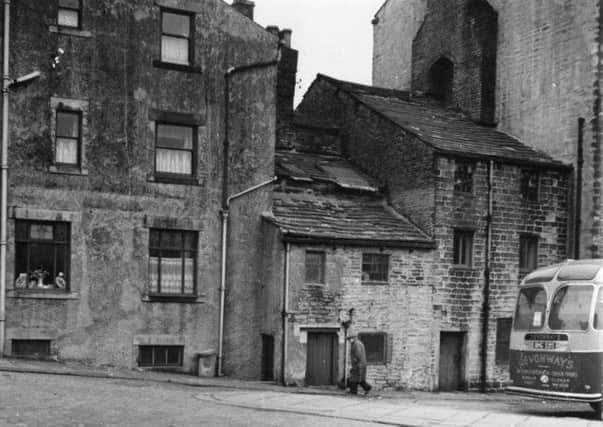The history of Burnley’s very own Bedlam


There are lots of place names, in most parts of the country, which refer to, or are inspired by, London. This is not to say London has always been a good influence, indeed perfidious might be a better word. It could be argued that Burnley’s relative decline is the consequence of policies which have favoured London and the South East for decades and we all know of the consequences of the recent decisions of London-based bankers. Most of the representatives we have sent to London have had little effect since our decline began at the end of the First World War.
At the meeting of the group, I said that, in addition to Wapping, I could think of four more – Little London, a farm in Extwistle; the Chelsea area of Trawden; Cheapside in Burnley and Bedlam, also in Burnley. I wonder if you can think of any more? If you can, please let me know.
Advertisement
Hide AdAdvertisement
Hide AdBurnley’s Bedlam is mentioned in “Bygone Burnley” by W.A. Balderstone which was edited, in his Historical Imprint series, and published by Jack Nadin in 2001. Mr Balderstone’s reference comes after he had described the building which later became the Yorkshire Hotel. As many of you will know, this building was situated close to the Culvert in Yorkshire Street, though in 1818, the year to which Mr Balderstone was referring, the street was probably known as Eastgate.
In those days, the Yorkshire Hotel was a private house occupied by Mr John Catlow. Then the writer the goes on as follows, “Behind Mr Catlow’s house is a melody of 12 or 14 cottages put on the ground “anyhow”, so they became known as “Bedlam …”.
There are a number of possibilities as to the exact location of this property but one of them is the property which is shown in the photo. The street is Basket Street which was just round the corner from the Culvert and close to the Yorkshire Hotel.
Many of you will remember Basket Street because of the large mill, the gable end of which can be seen in the photo. This was Basket Street Mill which was once famously occupied by the Burnley firm Taco (Cloche) Ltd. Fred Loads, of the BBC’s “Gardeners’ Question Time”, was the manager.
Advertisement
Hide AdAdvertisement
Hide AdI noted, as some of you will have also, the word “melody” as used by Mr Balderstone but perhaps he meant medley, a “confused mixture”, in this case of buildings. The photo gives a hint of this, but I understand that properties on what became Chapel Street, nearby, were just as unplanned.
Bedlam in London was the common name for the Bethlehem Hospital in Bishopsgate. The world’s oldest psychiatric institution, it had been founded by Simon FitzMary in 1247 and was also known as “Bethlem” but “Bedlam” stuck and, because of the confused nature, not of the building, but of its inhabitants, the popular name of the place became associated with confusion, disorganisation etc.
The London original was rebuilt several times and the 1673 version must have been a sight to behold. It was situated in Moorfields, was modelled on the Tuileries Palace in Paris and decorated with gardens and columns. Above the entry gate the sculptor, Cibber, created two bald-headed, semi-naked figures called “Raving Madness” and “Melancholy Madness”. They became one of the great sights of London and, from this time, the hospital acquired its true renown, visitors, foreign travellers and writers flocking to its apartments to see the mad and confused confined within them.
In Burnley we have not had anything remotely like the Bethlehem Hospital but I have often wondered if one of the names originally given to the town’s third workhouse, the building now known as the General Hospital, had any connection. We simply knew the great building in Briercliffe Road as the workhouse but it was also known as Primrose Bank Institution and, perhaps significantly, Moorfields. Were there mental health wards in the workhouse? Of course there were!